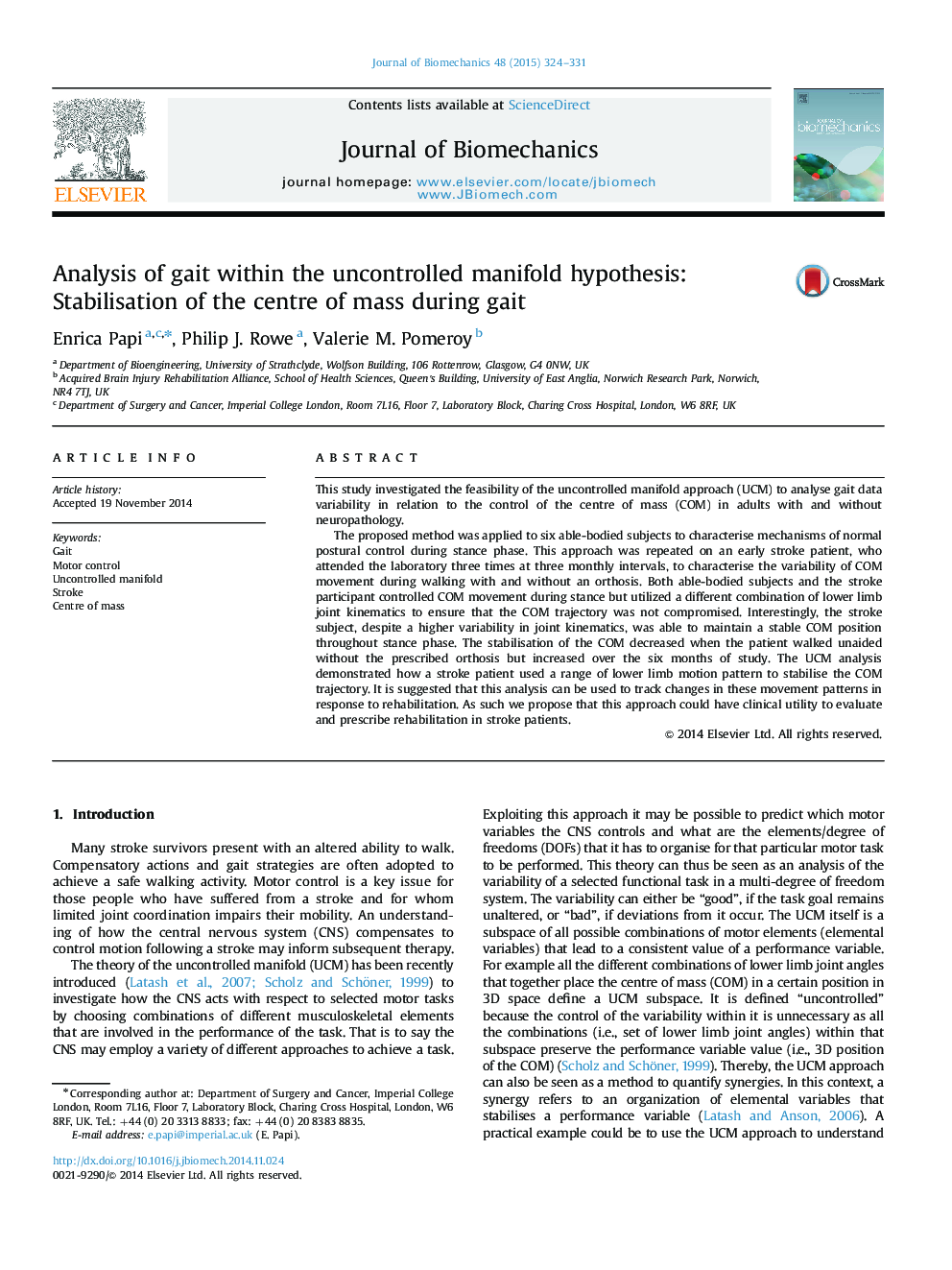| Article ID | Journal | Published Year | Pages | File Type |
|---|---|---|---|---|
| 10431624 | Journal of Biomechanics | 2015 | 8 Pages |
Abstract
The proposed method was applied to six able-bodied subjects to characterise mechanisms of normal postural control during stance phase. This approach was repeated on an early stroke patient, who attended the laboratory three times at three monthly intervals, to characterise the variability of COM movement during walking with and without an orthosis. Both able-bodied subjects and the stroke participant controlled COM movement during stance but utilized a different combination of lower limb joint kinematics to ensure that the COM trajectory was not compromised. Interestingly, the stroke subject, despite a higher variability in joint kinematics, was able to maintain a stable COM position throughout stance phase. The stabilisation of the COM decreased when the patient walked unaided without the prescribed orthosis but increased over the six months of study. The UCM analysis demonstrated how a stroke patient used a range of lower limb motion pattern to stabilise the COM trajectory. It is suggested that this analysis can be used to track changes in these movement patterns in response to rehabilitation. As such we propose that this approach could have clinical utility to evaluate and prescribe rehabilitation in stroke patients.
Related Topics
Physical Sciences and Engineering
Engineering
Biomedical Engineering
Authors
Enrica Papi, Philip J. Rowe, Valerie M. Pomeroy,
